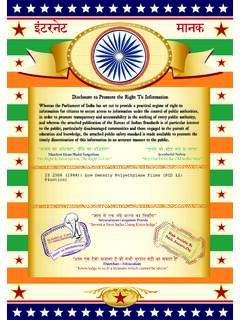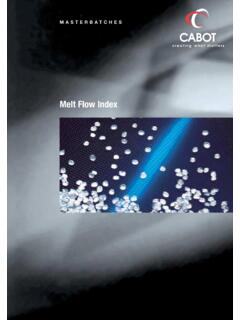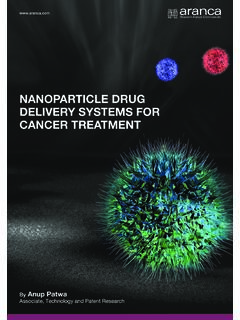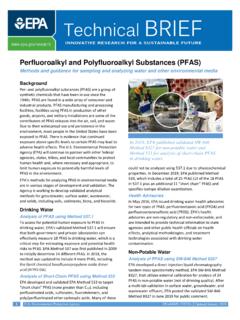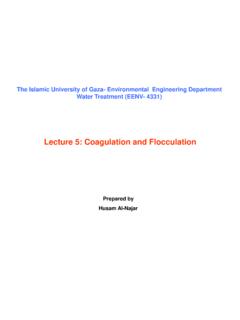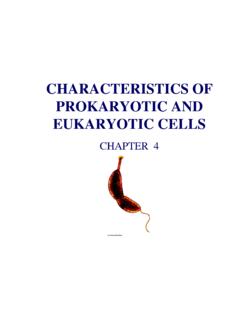Transcription of Poly(methyl methacrylate) (PMMA) - Plastics World
1 CAE DS Injection Moulding Materials Poly(methyl methacrylate) ( pmma ). Technical University of Gabrovo Milena Koleva General poly (methacrylates) are polymers of the esters of methacrylic acids. The General most commonly used among them is Poly(methyl methacrylate) ( pmma ). Poly(methyl methacrylate) or poly (methyl 2 methylpropenoate) is the polymer of methyl methacrylate, with chemical formula C5H8O2)n. It is a clear, colourless poly . mer available on the market in both pellet and sheet form under the names Plexiglas, Acrylite, Perspex, Plazcryl, Acrylplast, Altuglas, Lucite etc. It is commonly called acrylic glass or simply acrylic. Another polymer, Poly(methyl acrylate) (PMA) is a rubbery material, similar to Poly(methyl methacrylate), but softer than it, because its long polymer chains are thinner and smoother and can more easily slide past each other.
2 Poly(methyl methacrylate) is produced by free radical polymerization of methyl Structure methacrylate in mass (when it is in sheet form) or suspension polymerization according to the following chart: Properties Physical and pmma is a linear thermoplastic polymer. PMA has a lack of methyl groups on the mechanical backbone carbon chain its long polymer chains are thinner and smoother and can properties slide past each other more easily, so the material becomes softer. Main physical characteristics of pmma are shown in table 1. pmma has high mechanical strength, high Young s modulus and low elongation at break. It does not shatter on rupture. It is one of the hardest thermoplastics and is also highly scratch resistant.
3 It exhibits low moisture and water absorbing capacity, due to which products made have good dimensional stability. Both of these charac . teristics increase as the temperature rises. Table 2 shows some of mechanical characteristics of pmma . Polymethacrylates 1. CAE DS Injection Moulding Materials Table 1. Typical physical properties of Poly(methyl methacrylate). Physical Properties Value Density g/cm3. water Absorption 2 %. Moisture Absorption at Equilibrium %. Linear Mould Shrinkage cm/cm Melt Flow 27 g/10 min Its strength properties during injection moulding differ significantly in longitudinal and transverse direction as a result of the orientation effect. As in the case with other thermoplastics, the mechanical properties of pmma vary as the temperature changes.
4 This material tends to creep. It is not suitable for operation under multiple dynamic loads. pmma is one of the polymers that is most resistant to direct sunshine exposure. Its strength characteristics exhibit fairly small variations under the effect of UV . radiation, as well as in the presence of ozone. These properties of pmma make it suitable for products intended for long open air operation. Table 2. Mechanical characteristics of Polymethyl methacrylate Mechanical Properties Value Hardness, Rockwell M 63 97. Tensile Strength, Ultimate 47 79 MPa Elongation at Break 1 30 %. Tensile Modulus GPa Flexural Modulus 3 GPa Izod Impact, Notched 20k J/m2. Izod Impact, Unnotched 11kJ/m2.
5 Tensile Creep Modulus, 1 h 1800 2700 MPa Tensile Creep Modulus, 1000 h 1200 1800 MPa The low water absorption capacity of pmma makes it very suitable for electrical Electrical engineering purposes. Its dielectric properties are very good, but polystyrene and characteristics LDPE are superior to it. Its resistivity depends on the ambient temperature and relative humidity. The dielectric constant, as well as the loss tangent, depends on the temperature, the relative humidity of air and the frequency. Polymethacrylates 2. CAE DS Injection Moulding Materials Table 3. Electrical properties of Poly(methyl methacrylate). Electrical Properties Value Electrical Resistivity 1014 1015.
6 Cm Surface Resistance 1014 1016 . Loss factor, 20 C, 1000 Hz, 60% humidity Dielectric Constant 4. Dielectric Constant, Low Frequency 3 4. Dielectric Strength 60 kV/mm Dissipation Factor Arc Resistance 100 180 s The thermal stability of standard pmma is only 65oC. Heat stabilised types can withstand temperatures of up to 100oC. pmma can withstand temperatures as low as 70oC. Its resistance to temperature changes is very good. Thermal properties pmma is a combustible material, which continues burning even after the flame is removed the products separated in the process of thermal destruction have an intoxicating effect. Table 4. Thermal properties of Poly(methyl methacrylate).
7 Thermal Properties Value CTE, linear 20 C 60 130 m/m. C. CTE, linear 20 C Transverse to Flow 70 90 m/m. C. Specific Heat Capacity J/g. C. Thermal Conductivity Maximum Service Temperature, Air 41 103 C. Melting Point 130 C. Vicat Softening Point 47 117 C. Glass Temperature 100 105 C. pmma exhibits very good optical properties it transmits more light (up to 93% of Optical properties visible light) than glass. Combined with its good degree of compatibility with human tissue, it can be used for replacement intraocular lenses or for contact lenses. Unlike glass, pmma does not filter ultraviolet light. It transmits UV light down to 300 nm and allows infrared light of up to 2800 nm to pass.
8 Polymethacrylates 3. CAE DS Injection Moulding Materials Table 5. Optical properties of Poly(methyl methacrylate). Optical Properties Value Haze 1 96 %. Transmission, Visible 80 93 %. Refractive Index Chemical Acrylics are unaffected by aqueous solutions of most laboratory chemicals, by resistance detergents, cleaners, dilute inorganic acids, alkalis, and aliphatic hydrocarbons . however, acrylics are not recommended for use with chlorinated or aromatic hy . drocarbons, esters, or ketones. It dissolves completely in chloroform, di and tri . chlorethane, which is used for production of glues. The chemical resistance will vary with stress level, temperature, reagents and duration of exposure.
9 pmma are physiologically harmless. Due to their low moisture absorption capacity they are not attacked by moulds and enzymes. pmma is suitable for injection moulding, extrusion, extrusion blow moulding Processing (impact modified acrylics only), thermoforming, casting. The melt flow index of the methods material varies according to the method of treatment: low melt flow index ( ) materials intended for extrusion;. medium melt flow index ( 10 ) general purpose pmma ;. high melt flow index (> 10) pmma for injection moulding of products having a complex shape. For injection moulding the mould temperature should be between 40 and 80oC, depending on the type, the material temperature should be between 200 and 250oC.
10 Usually high injection pressures are needed because of poor flow properties. This is particularly important for optical mouldings where visible weld lines will form if the correct parameters are not used. During injection moulding internal stresses often build up, which can be eliminated by heating at a temperature about 80 C. (tempering). Mould's nozzle is an important factor when manufacturing pmma product. The size of the nozzle gate varies depending on the shape and the size of the product. Products manufactured from pmma are mainly clear and transparent and it is important that they do not have any scratches. So that it is recommend to use at least draft angle of 1 (rather 2 ).
